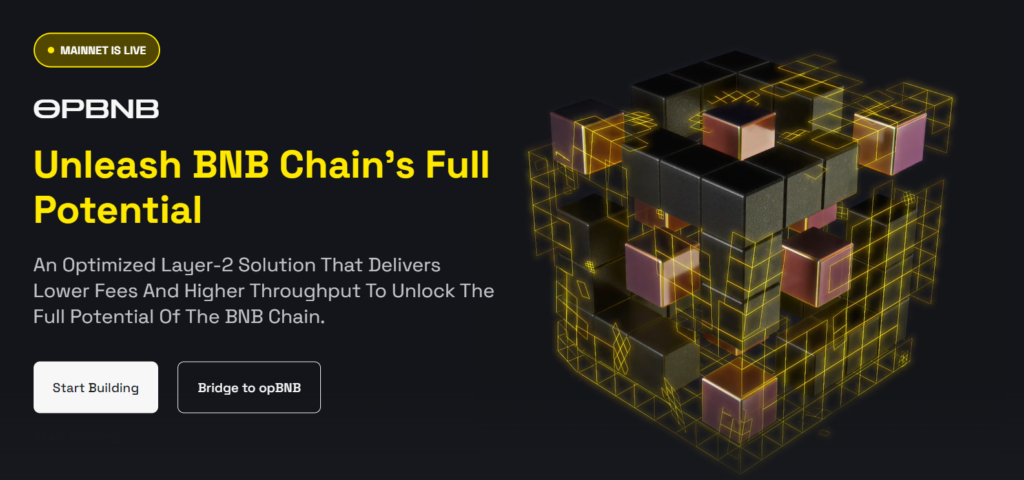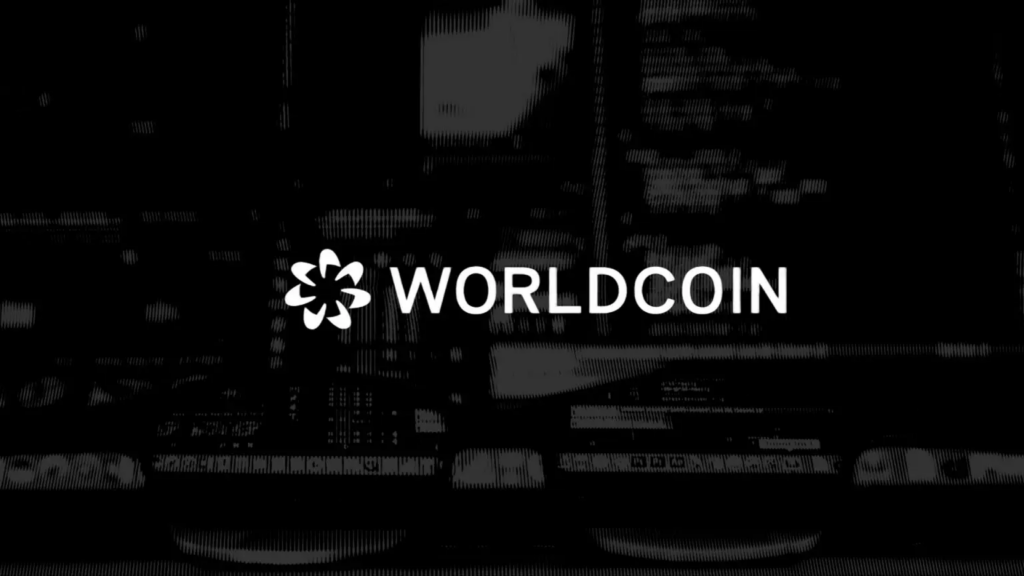The OP Stack, or Optimism stack, is a collection of open-source software components that powers the Optimism network and its ecosystem. It is maintained by the Optimism Collective, a large and well-funded community.

The OP Stack includes modules that are chosen based on their utility, simplicity, and extensibility. A module must: Help power the Optimism Collective; Be simple and understandable to enable scalability and reduce engineering costs; and be extensible so that it can be used to build with and on top of.
The OP Stack is decentralized, meaning that any user can access and contribute to the codebase. The OP Stack aims to create a shared, high-quality, and fully open-source system for deploying new rollup networks. This is especially important with the advent of the Superchain concept, which requires new networks to be created securely and to interoperate with each other. By coordinating on shared standards, the Optimism Collective can avoid rebuilding the same software repeatedly.
While the OP Stack currently simplifies the process of creating layer 2 blockchains, it is not limited to this. The OP Stack also extends to layers on top of the underlying blockchain, including tools like block explorers, message-passing mechanisms, and governance systems.
What is the OP Stack?

Empowering the Optimism network and its comprehensive infrastructure, the OP stack, or optimism stack, is a compilation of software elements currently constituting the backbone of the Optimism mainnet. Managed by the well-resourced Optimism Collective, this stack outlines the various components within the Optimism setup. As per the Optimism team, these components are chosen based on their utility, simplicity, and ability to be expanded upon. Any new addition to the stack is expected to contribute to the strengthening of the Optimism Collective, be user-friendly to facilitate scalability and minimize development expenses, as well as adaptable to ensure its potential for further development. The software itself operates in a decentralized and open-source manner, allowing any user to access and contribute to the underlying codebase.
The principal objective of the OP Stack is to establish a shared, top-notch, and entirely open-source framework for deploying new rollup networks. This becomes particularly crucial with the introduction of the Superchain concept, which necessitates the secure establishment of new networks that can seamlessly interact within the proposed Superchain environment. By adhering to common standards, the Optimism Collective can prevent redundant development efforts in isolated environments. While the current focus of the OP Stack is streamlining the creation of layer 2 blockchains, its scope extends beyond this. The OP Stack encompasses layers above the foundational blockchain, encompassing tools like block explorers, message-passing mechanisms, governance systems, and more.
OP Stack is in its initial Bedrock phase, representing the first implementation of the stack. Bedrock equips users with the necessary tools to launch optimistic rollup networks, with its APIs tailored specifically to support these rollups. This release has been tailored to accommodate the Optimism Superchain, which envisions a network of interconnected layer 2s sharing security features, communication layers, and the common development stack (the OP Stack itself). Bedrock facilitates swift creation and deployment of custom rollup networks that seamlessly integrate into the Superchain ecosystem. However, it should be noted that, as of the Bedrock release, the OP Stack isn’t designed for adaptability, a key feature for tailoring rollup networks, which will become essential for the upcoming iterations of the OP Stack.
Top 5 projects are using the OP Stack codebase
1. Base

Base is built on the MIT-licensed OP Stack, in collaboration with Optimism as an Ethereum L2, with the security, stability, and scalability you need to power your dapps. Base is joining as the second Core Dev team working on the OP Stack to ensure it’s a public good available to everyone. With this, Coinbase plans to bring its 100M users on the rollup chain, thereby creating no network congestion on the main chain.
Coinbase and OP Labs have recently joined forces to expedite the development and decentralization of the Superchain and the OP Stack, with the primary goal of scaling Ethereum for the advantage of the web3 developers, users, and the broader cryptoeconomy. This collaboration marks a significant milestone in the ongoing evolution of the Ethereum network, with the introduction of the Ethereum Improvement Proposal (EIP) 4844 acting as a catalyst for this partnership.
The journey began when both Coinbase and OP Labs recognized the potential of EIP4844 as the missing link required to propel Ethereum’s scalability to new heights. By leveraging the capabilities of this proposal, both entities foresee the possibility of achieving a substantial 10-100x cost reduction, thereby rendering the cryptoeconomy more accessible to mainstream users.
Over the last nine months, the teams have tirelessly worked in conjunction with the Ethereum core development community to expedite the implementation of EIP4844. Originally slated for implementation in 2024, this proposal is now set to be integrated into the upcoming Ethereum hard fork scheduled for the summer of 2023, showcasing the collective efforts of all stakeholders involved in this ambitious initiative.
The collective vision shared by Coinbase, OP Labs, and the Optimism Collective aims to revolutionize the Ethereum ecosystem by designing a protocol capable of sequencing multiple Layer 2 solutions while ensuring seamless interoperability and composability through the OP Stack. This strategic collaboration underscores the commitment of these entities to foster a more inclusive and interconnected cryptoeconomy, promoting greater accessibility and utility for developers and users alike.
As part of this collaboration, Coinbase assumes the role of the second core development team, dedicated to expediting the progress of the Superchain and the OP Stack. In conjunction with OP Labs and the Optimism Collective, Coinbase endeavors to accelerate activity within the Superchain, bringing its on-chain products and extensive user base into the ecosystem. This strategic move is anticipated to significantly enhance the overall activity within the Superchain, allowing Coinbase users to seamlessly interact with decentralized applications (dapps) and transfer assets across the network.
Furthermore, as a testament to their commitment to fostering a sustainable ecosystem, Coinbase has pledged to contribute a percentage of transaction fees to the Optimism Collective. This contribution will play a vital role in funding the core public goods infrastructure of both the Superchain and the broader cryptoeconomy, demonstrating a commitment to the collective advancement of the blockchain industry.
In line with their mission to advance the developer ecosystem, Coinbase will work in close collaboration with OP Labs and the Optimism Collective to simplify the process of building new Layer 2 solutions and rollups. By facilitating the deployment of applications across the Superchain, this collaboration aims to foster an environment conducive to the creation of novel and innovative solutions, further enriching the blockchain landscape.
Anticipating a future where both Base and Optimism Mainnet will function as independent Layer 2 solutions, Coinbase envisions a flexible framework that allows developers to select the most suitable platform based on the unique requirements of their use case. By fostering interoperability and flexibility, this approach is poised to empower developers and promote the seamless integration of various use cases within the broader blockchain ecosystem.
With this pioneering collaboration between Coinbase, OP Labs, and the Optimism Collective, the cryptocurrency community eagerly anticipates the transformative impact these developments will have on the Ethereum network and the broader landscape of the cryptoeconomy. As the integration of EIP4844 nears completion, industry stakeholders and enthusiasts alike are poised to witness a new era of scalability and innovation within the Ethereum ecosystem.
2. opBNB

opBNBhttps://opbnb.bnbchain.org/en as a high-performance Layer-2 solution within the BNB ecosystem has captured the attention of enthusiasts and industry players alike. Developed using the cutting-edge OP Stack, opBNB showcases remarkable potential, underscored by its impressive block size of 100M. The platform’s capacity to maintain stable and low gas fees is a key feature that positions it as an attractive and viable solution for widespread adoption across a spectrum of digital environments.
opBNB’s capacity to accommodate diverse digital needs, ranging from gaming platforms and decentralized exchanges to daily transactions and digital collectibles, highlights its versatility and adaptability. With an unwavering focus on delivering optimal performance, opBNB has emerged as a dynamic solution capable of catering to the evolving demands of the digital economy.
BNB, the driving force behind opBNB, emphasizes the inherent capabilities of their OP-based chain, showcasing its ability to process over 4000 transactions per second (TPS). Furthermore, the platform boasts an impressive one-second block time, ensuring swift and efficient transaction processing. Notably, opBNB distinguishes itself by offering transaction fees as low as $0.005, a feature that significantly enhances its appeal for users and businesses seeking cost-effective and efficient blockchain solutions.
The decision to launch the OP Stack chain aligns seamlessly with BNB’s overarching vision, emphasizing their commitment to fostering innovation and delivering a seamless user experience within the blockchain ecosystem. By leveraging the capabilities of the OP Stack, BNB has positioned opBNB as a robust and dynamic solution tailored to meet the evolving demands of the digital landscape.
Furthermore, the platform’s exceptional transaction processing capabilities and cost-effective fee structure further solidify its position as a reliable and efficient blockchain solution. With its impressive throughput capacity and rapid block time, opBNB is well-equipped to accommodate the demands of various digital applications, including high-frequency trading, real-time gaming, and digital asset transactions.
The introduction of opBNB is poised to foster a new era of possibilities within the BNB ecosystem, offering users and businesses a comprehensive and high-performance solution that transcends traditional limitations. By prioritizing scalability, efficiency, and cost-effectiveness, opBNB is well-positioned to drive widespread adoption and catalyze the integration of blockchain technology across various sectors.
Industry experts and stakeholders within the cryptocurrency community anticipate that the launch of opBNB will serve as a catalyst for the advancement of the BNB ecosystem, facilitating enhanced efficiency, accessibility, and innovation within the digital space. As the platform continues to gain traction and recognition within the blockchain community, the future of opBNB appears promising, signaling a new paradigm of efficiency and performance within the BNB ecosystem.
3. World Coin

Worldcoin is an open-source protocol, supported by a global community of developers, individuals, economists and technologists committed to expanding participation in, and access to, the global economy. Tools for Humanity helped launch Worldcoin, and currently serve as advisors to the Foundation and operators of the World App.
Worldcoin is designed to become the world’s largest digital identity and financial network, giving ownership to everyone. Worldcoin aims to provide universal access to the global economy no matter your country or background, establishing a place for all of us to benefit in the age of AI.
On May 11, 2023, Worldcoin announced that it would be bringing its two products, World ID and World App, to the OP Stack, with a vision of building a Superchain. As a result, after the release of the WLD token on July 24, the number of on-chain transactions on Optimism also saw a significant increase, reaching 800,000 transactions in a day, surpassing Arbitrum.
Individuals verified by Orb and possessing World IDs will receive recurring claims of free WLD tokens, marking a significant strategy aimed at establishing WLD as one of the most widely distributed cryptocurrencies. The WLD token boasts a fixed maximum supply of 10 billion tokens, enforced by a smart contract for a period of 15 years from its initiation. After this duration, the governance body will deliberate on the potential implementation of an annual inflation rate to ensure the sustainability of the protocol over the long term. Any additional tokens minted beyond this period will be allocated based on decisions made by the governance entity.
The initial distribution of the 10 billion WLD tokens has been allocated among various stakeholders. Notably, 75% of the tokens have been earmarked for the Worldcoin community, while 9.8% has been allocated to the original development team. Additionally, Tools for Humanity investors have been assigned 13.5% of the tokens, with a further 1.7% reserved for the TFH reserve.
Functioning as a utility token, WLD encompasses governance features that empower token holders to participate in shaping the token’s future. In addition to the typical one-token-one-vote governance mechanism, WLD, owing to the World ID feature, ensures the implementation of a one-person-one-vote system, potentially offering novel governance avenues. The Worldcoin Foundation, a non-profit organization dedicated to nurturing and supporting the Worldcoin community until it achieves autonomy, is expected to champion these governance developments.
The Worldcoin Foundation has already outlined plans to invite proposals from the community, fostering collaboration to determine the interplay between WLD and World ID within the governance structure of Worldcoin. Moreover, the WLD community is expected to play a pivotal role in defining the token’s utility beyond governance. For example, token holders can leverage WLD for various transactions within the World App or alternative cryptocurrency wallets such as Trust Wallet.
4. Zora Network

Zora, the groundbreaking decentralized protocol enabling individuals to participate in seamless and permissionless buying, selling, and creation, has made significant strides in its mission to empower artists, creators, and global communities. With a strong emphasis on accessibility and innovation, Zora has developed a series of user-friendly tools that facilitate an easy entry point for individuals looking to engage in the world of digital creation and commerce.
Leveraging the capabilities of the OP Stack, Zora has recently embarked on the development of its OP Stack-based rollup chain, marking a significant expansion of its Ethereum-based project. This strategic move is poised to unlock new avenues for millions of artists and creators, enabling them to harness the power of blockchain technology in an efficient and cost-effective manner. Through the deployment of their rollup chain, Zora aims to streamline transactions on the Ethereum network, significantly reducing costs, increasing throughput, and ultimately enhancing the overall user experience for its growing community of global users.
One of the key features of the Zora protocol is its commitment to fostering a decentralized ecosystem that prioritizes inclusivity and accessibility. By leveraging the OP Stack, Zora empowers users to seamlessly navigate the complexities of the blockchain landscape, providing a user-friendly and intuitive platform that caters to both seasoned creators and newcomers alike. The integration of the OP Stack not only enhances the scalability and efficiency of the Zora protocol but also underscores its dedication to fostering a more inclusive and accessible digital marketplace for artists and creators worldwide.
Furthermore, Zora’s rollup launch is set to revolutionize the digital art and creator economy, offering a secure and transparent platform that enables users to participate in a diverse range of creative activities with ease. By leveraging the advantages of the rollup technology, Zora aims to alleviate the challenges associated with high transaction costs and network congestion, fostering a more seamless and streamlined experience for users engaging in various creative endeavors.
The rollup launch will also play a pivotal role in enhancing the overall security and reliability of the Zora ecosystem, providing users with a robust and resilient infrastructure that safeguards their digital assets and transactions. By prioritizing user security and privacy, Zora is poised to instill a sense of trust and confidence within its growing community, fostering a vibrant and dynamic marketplace where creators can showcase their talents and connect with a global audience.
In addition, Zora’s commitment to fostering a vibrant and engaged community is reflected in its dedication to providing a comprehensive suite of tools that empower users to unleash their creative potential. By offering a range of user-friendly and intuitive tools, Zora aims to democratize the creative process, enabling individuals to bring their artistic visions to life and connect with a global network of like-minded creators and enthusiasts.
As Zora continues to pave the way for a more accessible and inclusive digital economy, its integration of the OP Stack and the forthcoming rollup launch underscores its commitment to fostering a vibrant and dynamic ecosystem that empowers creators and artists to thrive in the ever-evolving world of digital commerce and creativity. With a strong focus on accessibility, security, and innovation, Zora remains at the forefront of revolutionizing the digital art and creator economy, offering a robust and reliable platform that enables users to explore, create, and connect in a decentralized and user-centric environment.
5. Magi

The advent of Magi, a rollup client on the Optimism network, marks a significant milestone in the evolution of the blockchain landscape, particularly in the realm of transaction processing and synchronization on Rollup chains. Magi serves as an essential execution layer, facilitating the seamless and efficient processing of transactions while ensuring synchronization across the network. While the platform is currently undergoing rigorous testing, additional contributions are still needed to propel the development of the official product and pave the way for its widespread adoption.
To comprehend the functionality of Magi more intuitively, envision each of your transactions on Layer 2 networks such as Optimism or Arbitrum requiring an intermediary party capable of processing these transactions off-chain. This intermediary, known as the Rollup client, is responsible for executing the transactions and subsequently relaying the final results to the Ethereum network for verification. Magi, as a rollup client, assumes this critical role, ensuring the seamless processing and synchronization of transactions, thereby enhancing the overall efficiency and performance of the network.
OP Labs, in its pursuit of refining the functionality of the Optimism ecosystem, currently employs a testing version known as op-node, which serves a similar purpose to that of Magi. Acting as a vital component within the OP Stack, both Magi and op-node play a pivotal role in managing and synchronizing blocks, thereby contributing to the seamless operation and optimization of the entire network infrastructure.
As of the present, op-node remains the solitary application available for diversified use in the rollup phase. Developed by OP Labs and crafted using the GO language, op-node has been instrumental in streamlining the functionalities of the OP Stack, ensuring the efficient processing of transactions, and fostering an environment conducive to the growth of the Optimism ecosystem.
With the introduction of Magi, written in the Rust language, the aim is to enhance and augment the capabilities of the OP Stack, catering to a wider user base and fostering a more inclusive and robust network infrastructure. This strategic shift to the Rust language underscores a commitment to innovation and scalability, positioning Magi as a pivotal tool in the optimization and expansion of the Optimism ecosystem.
As the development of Magi continues to gain momentum, industry experts and stakeholders within the blockchain community eagerly anticipate the platform’s official launch and its potential to revolutionize transaction processing and synchronization on Rollup chains. With a strong emphasis on efficiency, security, and scalability, Magi is poised to redefine the landscape of blockchain technology, paving the way for a more seamless and interconnected network infrastructure that caters to the evolving needs of users and businesses alike.
Structure of the OP Stack
Ethereum functions as the dedicated Data Availability (DA) layer for the OP Stack, with data from the sequencer module formatted and directly published to Ethereum. The integrity of the entire OP Stack relies on the security of the data stored on Ethereum, facilitated by its Proof of Stake (PoS) consensus mechanism. Ethereum, in its capacity as a DA layer, not only stores data but also ensures that all blocks are entirely accessible to network participants, a process overseen by participants who download and verify block contents. Future plans involve the implementation of data structures and DA assurances outlined in EIP-4844, including Binary Large Objects (BLOBs) and Data Availability Sampling (DAS), once Ethereum’s rollup-centric roadmap is completed.
At present, the OP Stack operates using a single Optimism sequencer module that gathers and publishes transaction data from the execution layer to the DA layer. This sequencer module verifies valid transactions, creates batches, and submits them to the base layer, forming the backbone of the rollup. As part of their vision for a decentralized rollup network, Optimism intends to introduce a modular sequencer set, facilitating the integration of multiple rollup networks within the OP Stack. This sequencer set allows OP Stack-based chains to bypass developing their own sequencer and enables atomic cross-chain composability with other chains.
The Ethereum Virtual Machine (EVM) serves as the dedicated module for the execution layer of the OP Stack, processing inputs from the derivation layer to execute state changes. As the OP Stack’s implementation of the EVM is minimally modified to support layer 2 transactions initiated on Ethereum, the state structure of OP Stack-based chains remains fully compatible with other EVM-based protocols, enabling seamless redeployment of smart contracts and accelerating the development of native ecosystems.
The derivation layer provides data inputs for state writes, determining how raw data from the DA layer is formatted and processed for the execution layer. Currently achieved through a rollup module, the plan is to replace this module with an indexer module that performs similar functions when events occur on specified smart contracts within the base layer.
The settlement layer serves as a read-only mechanism for external blockchains, allowing them to access the state of an OP Stack chain and make decisions accordingly. Presently, settlement is established using an attestation-based fault-proof mechanism, leveraging optimistic fraud proofs. Proposed settlement modules, including fault-proof optimistic settlement and validity proof settlement, aim to enhance the settlement process using permissionless fault-proving and zero-knowledge proofs, respectively.
Lastly, the governance layer, consisting of various modules, manages the OP Stack by overseeing system configuration, upgrades, and design decisions. Governance tokens and multisignature smart contracts are utilized for governance, with tokens representing voting power in decentralized governance models, and multisignature smart contracts executing decisions upon reaching a predefined threshold of signatures from participants. These decisions are often influenced by votes conducted using governance tokens.
The OP Stack currently drives the Optimism network, offering a layered architecture that serves as an effective framework for constructing secure, scalable, and integrated rollup networks. Each layer performs a critical function and is managed by specific networks or components, collectively providing the necessary functionality to build a comprehensive rollup network within an interoperable OP Stack-based ecosystem.
Conclusion
Our exploration into the “Top 5 Projects Using The Optimism OP Stack” has provided us with valuable insights into the innovative ways that this technology is being utilized. These projects demonstrate the immense potential of the Optimism OP Stack in revolutionizing various sectors. Each project has brought unique perspectives and solutions, pushing the boundaries of what’s achievable with this technology. As we move forward, it will be intriguing to see how these projects evolve and continue to harness the power of the Optimism OP Stack in their quest for innovation and excellence.
DISCLAIMER: The information on this website is provided as general market commentary and does not constitute investment advice. We encourage you to do your own research before investing.














